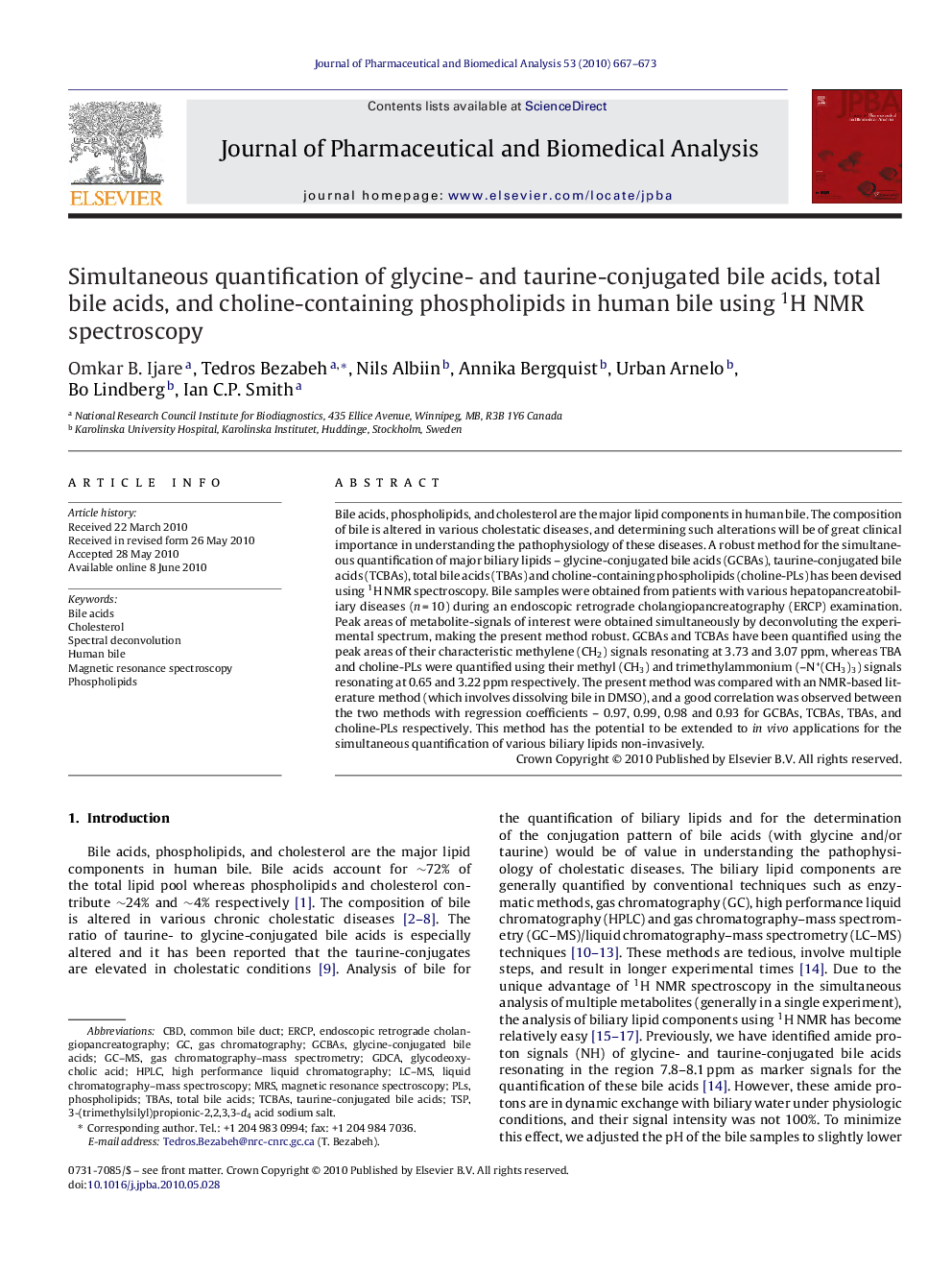| Article ID | Journal | Published Year | Pages | File Type |
|---|---|---|---|---|
| 1223334 | Journal of Pharmaceutical and Biomedical Analysis | 2010 | 7 Pages |
Bile acids, phospholipids, and cholesterol are the major lipid components in human bile. The composition of bile is altered in various cholestatic diseases, and determining such alterations will be of great clinical importance in understanding the pathophysiology of these diseases. A robust method for the simultaneous quantification of major biliary lipids – glycine-conjugated bile acids (GCBAs), taurine-conjugated bile acids (TCBAs), total bile acids (TBAs) and choline-containing phospholipids (choline-PLs) has been devised using 1H NMR spectroscopy. Bile samples were obtained from patients with various hepatopancreatobiliary diseases (n = 10) during an endoscopic retrograde cholangiopancreatography (ERCP) examination. Peak areas of metabolite-signals of interest were obtained simultaneously by deconvoluting the experimental spectrum, making the present method robust. GCBAs and TCBAs have been quantified using the peak areas of their characteristic methylene (CH2) signals resonating at 3.73 and 3.07 ppm, whereas TBA and choline-PLs were quantified using their methyl (CH3) and trimethylammonium (–N+(CH3)3) signals resonating at 0.65 and 3.22 ppm respectively. The present method was compared with an NMR-based literature method (which involves dissolving bile in DMSO), and a good correlation was observed between the two methods with regression coefficients – 0.97, 0.99, 0.98 and 0.93 for GCBAs, TCBAs, TBAs, and choline-PLs respectively. This method has the potential to be extended to in vivo applications for the simultaneous quantification of various biliary lipids non-invasively.
